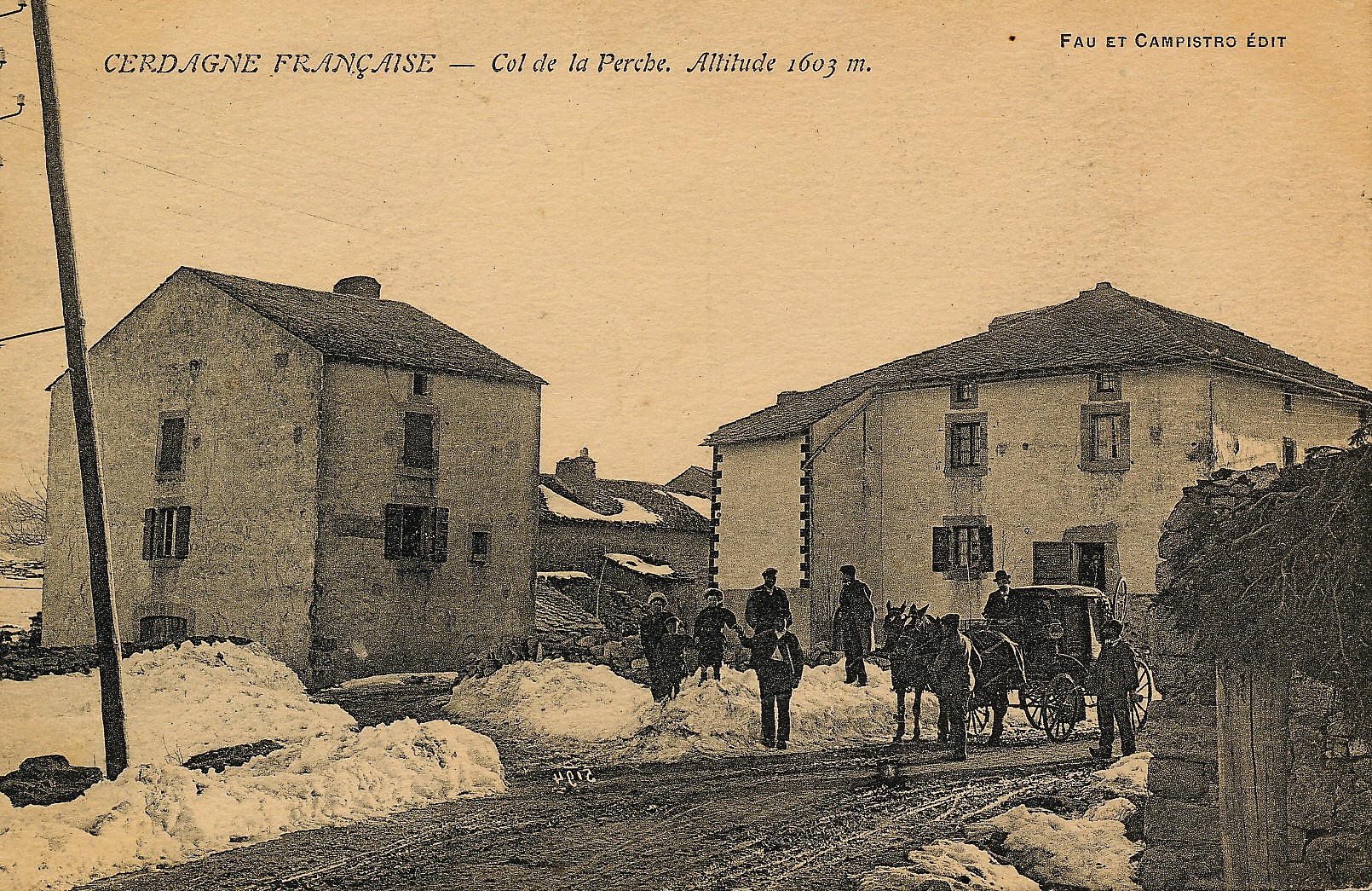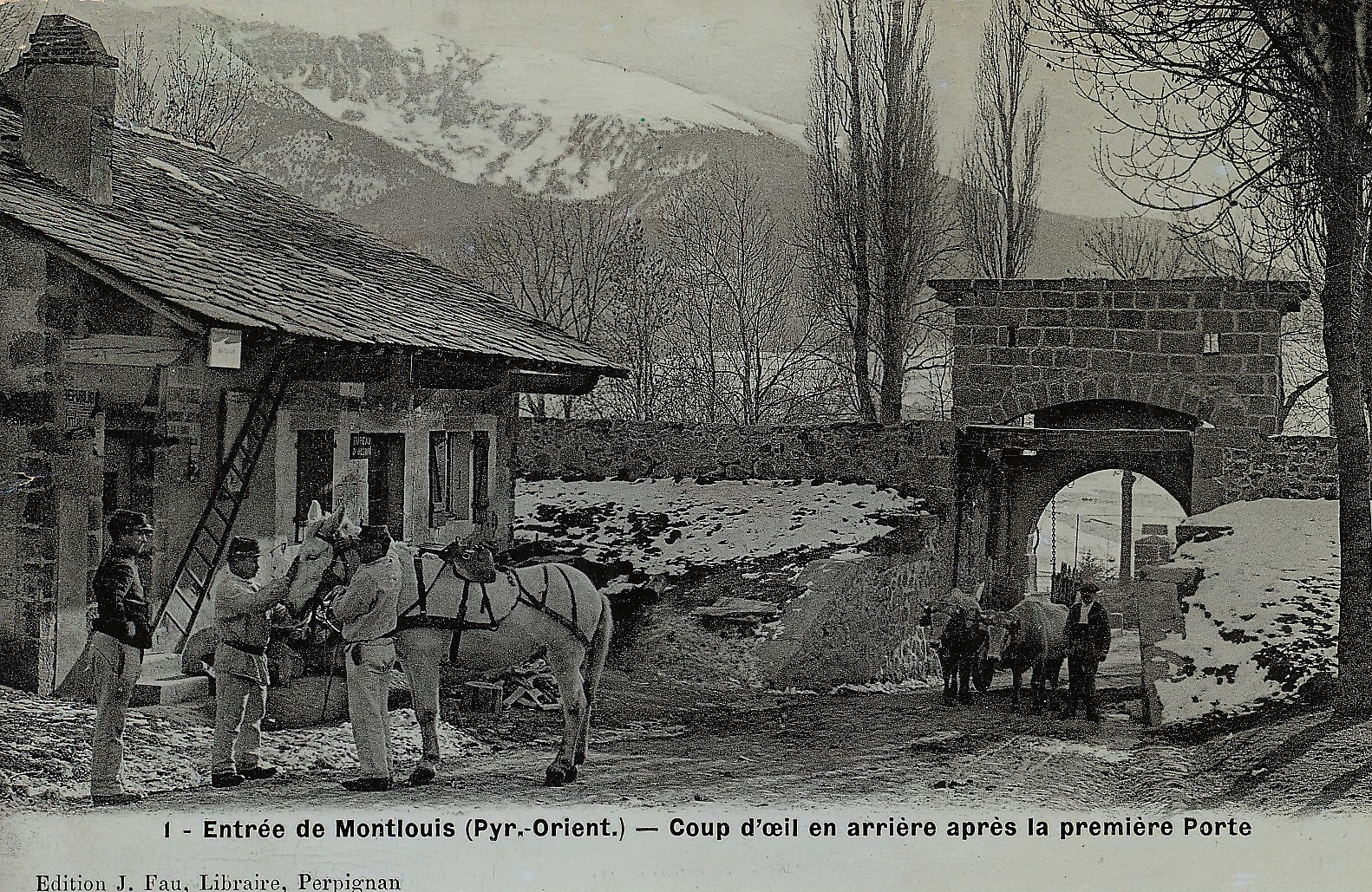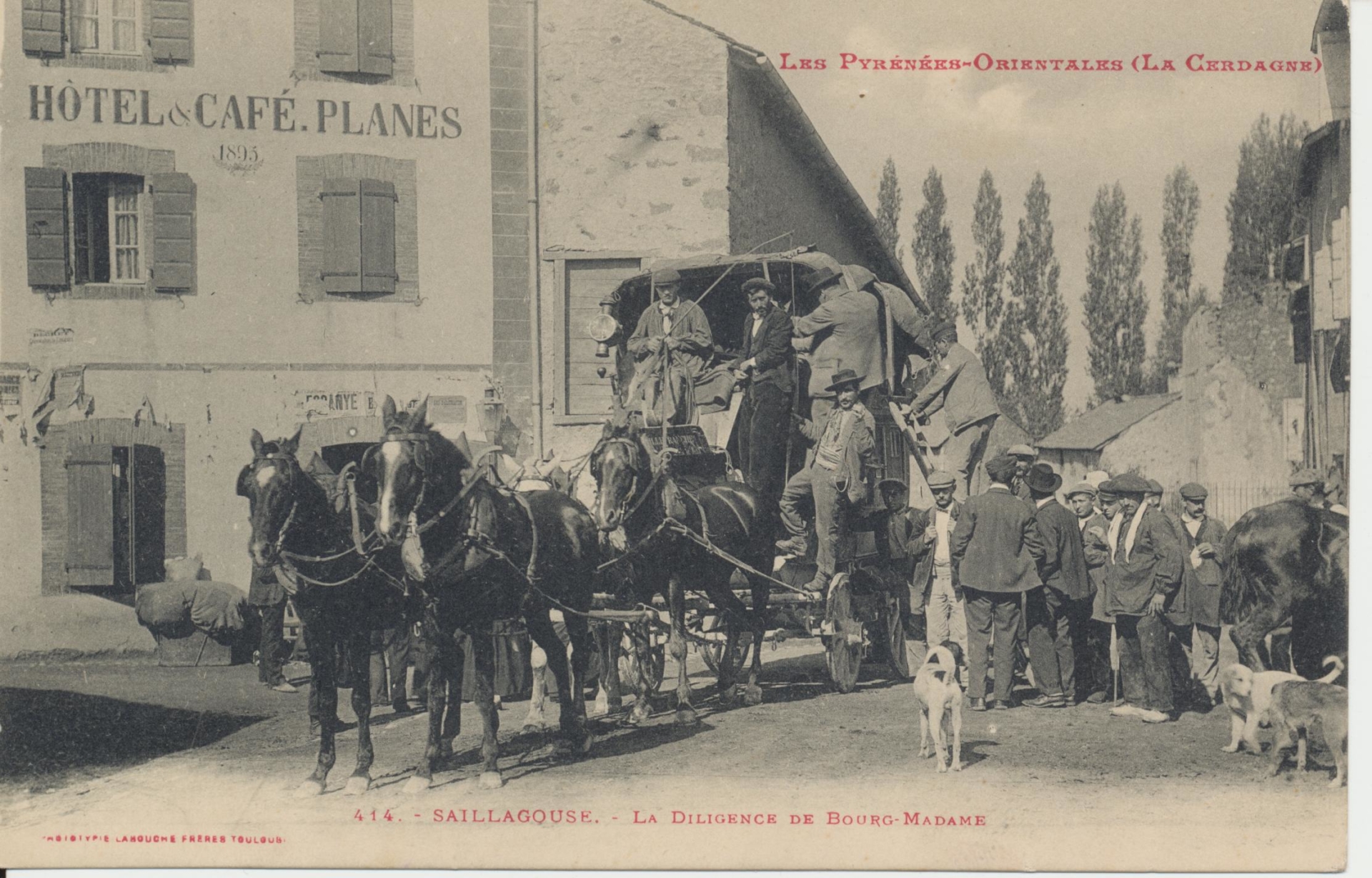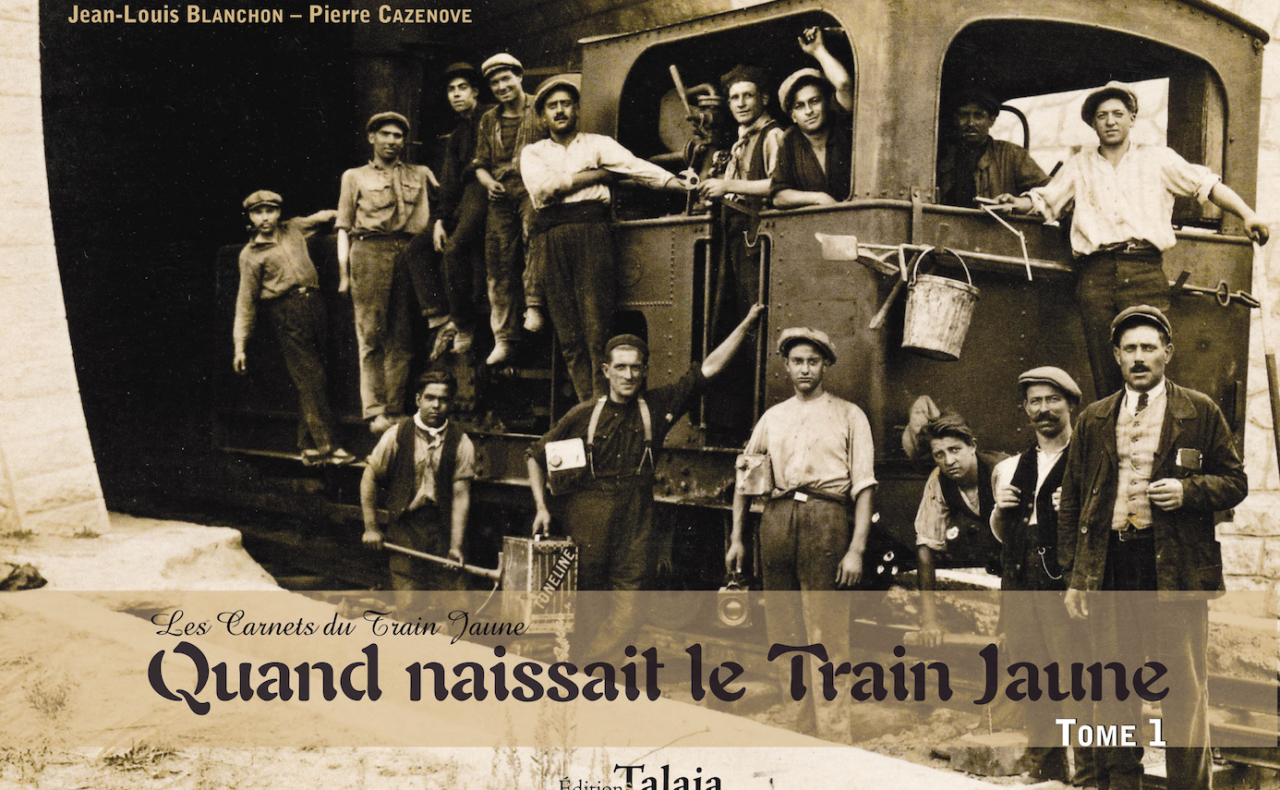With this new event highlighting the « Les carnets du Train Jaune » collection, the Parc Naturel Régional des Pyrénées Catalanes offers a retrospective, a journey back in time through the construction of the Yellow Train line and its history. This collection is the result of a collaboration between the Parc Naturel Régional des Pyrénées Catalanes and historians Pierre Cazenove and Jean-Louis Blanchon, co-published with Editions Talaïa.
In this first part, before construction of the line began, we look at the travel difficulties experienced at the beginning of the last century by the inhabitants of the high cantons of the Pyrénées-Orientales. These difficulties were exacerbated by the climate and the rigours of living at altitude.
Before the line…
The discomfort of the stagecoach, length of the journey and dangers of the road in winter explain the Cerdans’ attachment to the Yellow Train project. They still remember January 1895, so full of incidents. On 3 January, the stagecoach left Mont-Louis for Prades at one o’clock in the afternoon :
« Having reached 1km from Mont-Louis, a short distance from the Fetges bridge, the three horses in full flight, blinded by the whirlwind blowing at that moment, turned abruptly and jumped the parapet from a height of around 7m m ; the two horses hitched to the beam followed. Fortunately, the beam broke and the vehicle alone remained on the road, stopped by the bridge parapet, suspended over the abyss. One horse was killed instantly. The other four were unaffected. The postilion Giraud Codong, who replaced the driver in Cerdanya, and the three travellers suffered no ill effects. ” »

On 5 January, ” two men on horseback crossed Col de la Perche in appalling weather and at great risk to their lives, each carrying part of the mail. “
On 6 January, a “tartane” (boat) managed to take the mail from Mont-Louis to Prades in six hours. Only the military, stuck in Fontpédrouse on their return from leave, were happy about the situation.
On 11 January, the stagecoach overturned in front of Fetges. Equipment, animals and men were quickly buried, but a team of road-menders, who saw the accident, meant they got off lightly.
More cruel is the story of Joan Turet, from Maranges, a young man of 25. Near Ger, he was caught in a whirlwind with his mule loaded with clogs. The animal returned alone. Turet’s body was found at Creu Roja.
One anecdote followed another. In January 1900, a broken wheel before Villefranche forced all passengers to walk to the station. The 150 Mont-Louis leave-holders who walked down to Villefranche to catch the train in April had to wait impatiently for the line.

In April 1902, the stagecoach arrived late and passengers missed the train. In January 1905, in Villefranche, in front of the barracks before the Porte de France, the front horses slipped « on a sheet of ice that had formed during the night as a result of a gutter block » and fell.
Given these facts, it’s easy to understand why Saillagouse took it rather badly when Salanque put pressure on the elected representatives, Vilar and Delcros, so that the Rivesaltes to Barcarès line was preferred over the Cerdanya line. Saillagouse noted ironically at first : « Ah ! If only Salanque was in Cerdanya ! » then added, « a terrible crisis has been raging for more than twenty years throughout Cerdanya. Cattle and rye, the country’s only two products, were sold at ridiculously low prices. The population has fallen by 1,500. Many moved out, and those who remain live only by thrift (for the Cerdan in general don’t visit the café, are modestly clothed and eat rye bread all year round), they don’t have their villages lit by electricity and communicate with their district capital by a poor-quality horse-drawn carriage that some call a stagecoach. “

Book extract
Les Carnet du Train Jaune
Volume 1 – When the Yellow Train was born
authors: Jean-Louis Blanchon / Pierre Cazenove
Parc naturel régional des Pyrénées-catalanes / Editions Talaia
June 2012
Complete collection available for consultation and/or sale at Maison du Parc Naturel Régional des Pyrénées-Catalanes, in Olette (66360, La Bastide).
